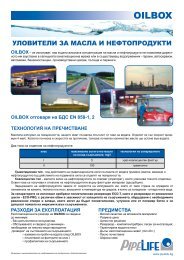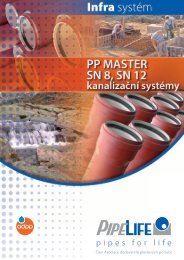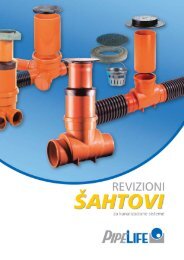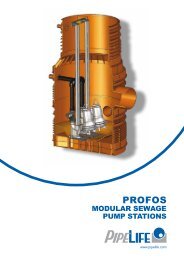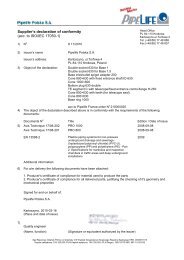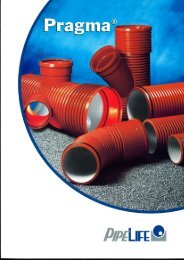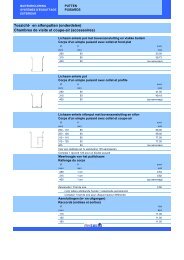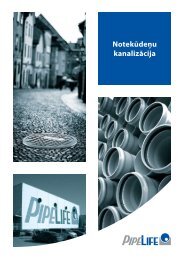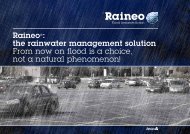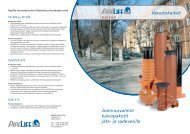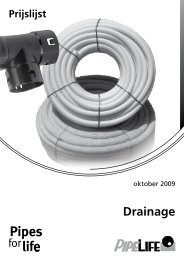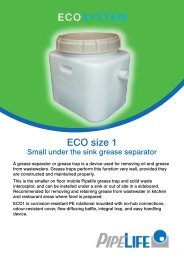PE Pipe Technical Catalogue (PDF) - Pipelife Norge AS
PE Pipe Technical Catalogue (PDF) - Pipelife Norge AS
PE Pipe Technical Catalogue (PDF) - Pipelife Norge AS
You also want an ePaper? Increase the reach of your titles
YUMPU automatically turns print PDFs into web optimized ePapers that Google loves.
<strong>Pipe</strong>life <strong>Norge</strong> <strong>AS</strong><strong>PE</strong> CATALOGUE-SUBMARINE APPLICATIONS, PI<strong>PE</strong>LIFE NORGE <strong>AS</strong>, December 2002.A.5.3Sinking velocityTo avoid acceleration forces on the pipeline the sinking speed shall be kept as constant as possibleduring installation.Since there will always be some variations in the velocity during a practical installation, it is alsoimportant to keep the speed at a low level.If we look at Newton’s law;∆vK = m ⋅A.5-10)∆tK = acceleration forcem = mass in movement∆v = change in speed∆t = change in time∆vWe see that a big change in will create a big force K to act on the water string and on∆tthe pipeline. If v is kept low, we will secure that ∆v also is low for a given time ∆t.As a rule of thumb, it has often been recommended that the sinking velocity should not exceed0.3 m/s ≈ 1 km/h.There are, however, several examples from successfully projects where the sinking speed has beengreater than 0.3 m/s.The sinking speed is governed by the flow, Q, entering the pipe.This flow is again dependent on the available driving pressure.∆ h = a⋅ H −a p iA.5-11)∆h = available pressure drop (mwc)H = depth (m)p i = internal pressure (mwc)a a = design air filling rateThe pressure drop can be expressed, ref. A.2-1) :22L v v∆ h = f ⋅ ⋅ + k s ⋅A.5-12)D 2 ⋅ g 2 ⋅ gf = friction factor (≈ 0.02)L = length of water filled section (m)D = internal diameter (m)v = velocity (m/s)g = gravity acceleration (≈ 9.81 m/s 2 )k s = singular loss coefficientIf we combine A.5-11) and A.5-12) we can express the sinking velocity as :12⎡2⋅ g ⋅ D ⋅ (a a ⋅ H − pi) ⎤v = ⎢⎥ A.5-13)⎣ f ⋅ L + k s ⋅ D ⎦From A.5-13) we see that v is dependent of the length of water filled section (L), the depth (H) andthe internal pressure (p i ). Other parameters are nearly constant. To keep a constant speed theinternal pressure (p i ) must be regulated in accordance to the changes in L and H.Side 71 av 84



